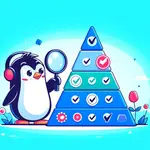ConceptsDemystifying the jargon

When you talk to people, you rely on a shared understanding of the language and terminology you use.
Groups of people often resort to using jargon, which is specialized language referring to concepts relevant to the in-group, to make the exchange
more efficient. However, using jargon can create a communication gap between those who are familiar with it and those who are not.
In this context, creating a structured way of representing knowledge by visualizing ideas and how they relate to one another can be helpful. By
creating a “map” of concepts, we can better understand and share them with others.
To stay up to date with the latest additions to these concepts, subscribe to the RSS feed in your
favourite feed reader.









